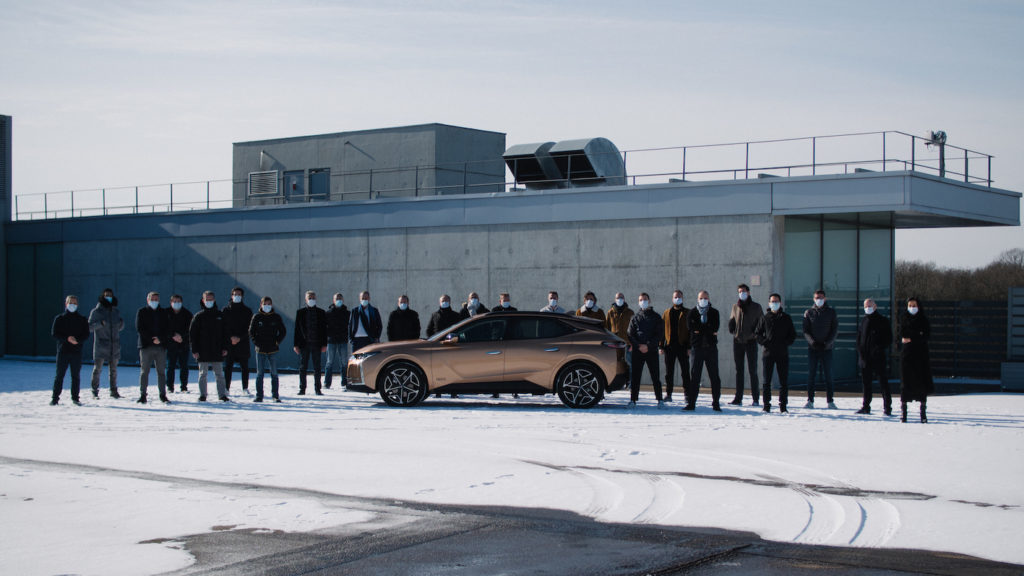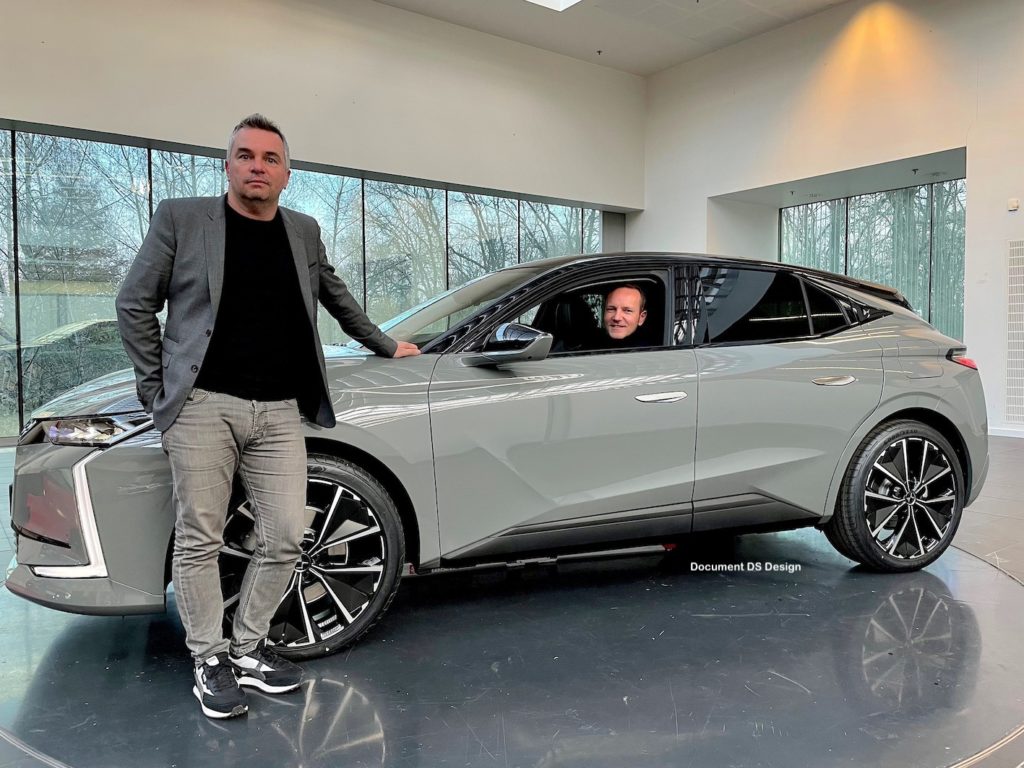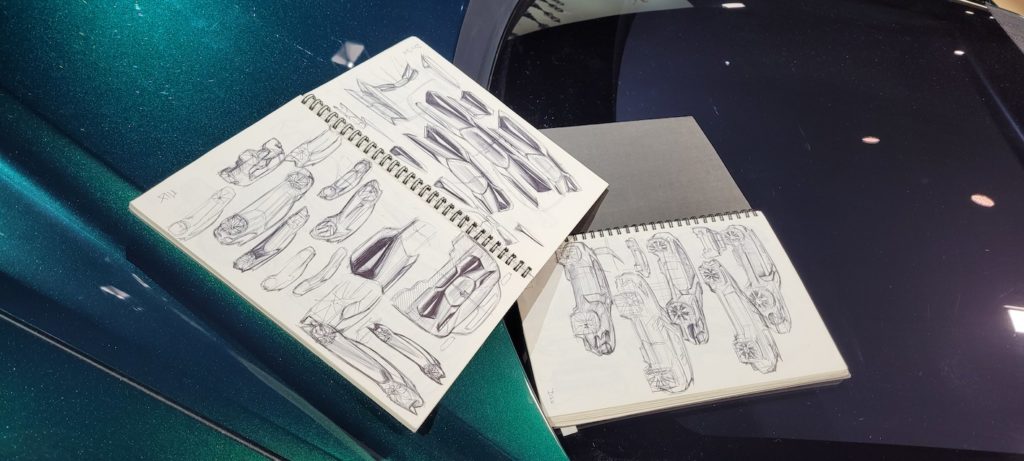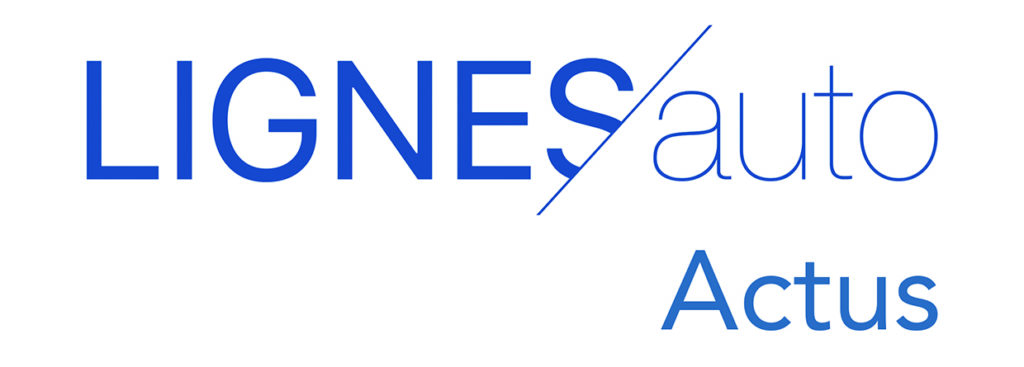
During DS Week, the manufacturer did not do things by halves! And for design lovers, the exhibition of the DS4 clay model and, above all, of the “manifesto” of the end of 2015 aroused curiosity.
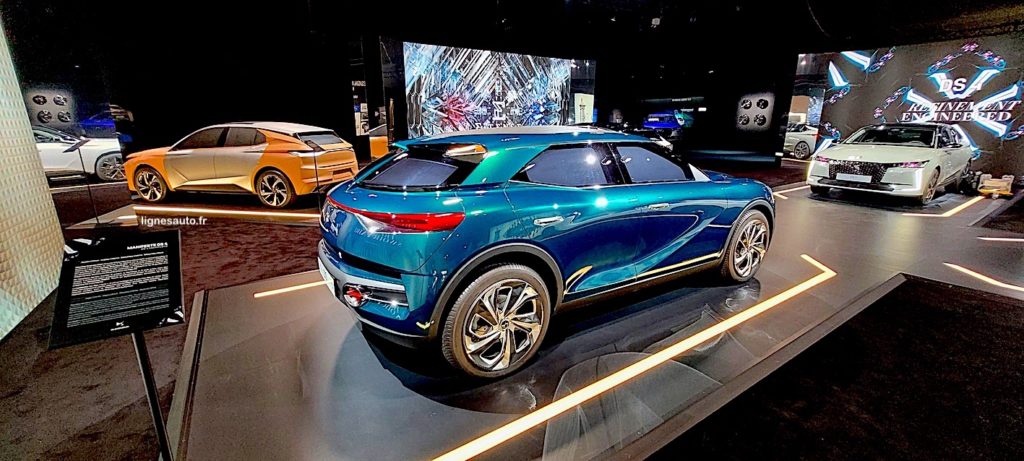
The manifesto of the D41 programme, which became the DS4 we know, was produced at the end of 2015, six years before the premium compact was launched. Until then, only readers of the quarterly LIGNES/auto had read it, below ( To order here: https://lignesautoeditions.fr)

This manifesto is, as its designer Thomas Duhamel says, “a mix between a mass-produced product and a concept car. For the D41 project, we didn’t start with small-scale models, we wanted to have a full-scale support quickly to convince. We are using more and more models of this type to define the direction in which we want to go. By the way, the manifesto you see there stayed in the studio for a long time during the development of the D41.“
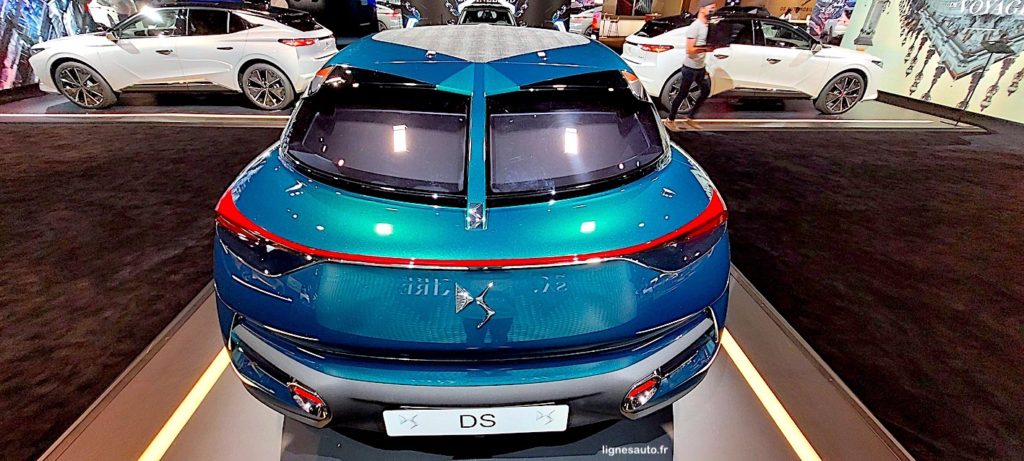
What is the main purpose of this manifesto? “It was done to define the dimensions and hard points of the new EMP2-V3 platform, according to the wishes of the design. At DS, we wanted big 72cm wheels, a set-back windscreen and tracks that would allow the vehicle to sit well on its wheels.“
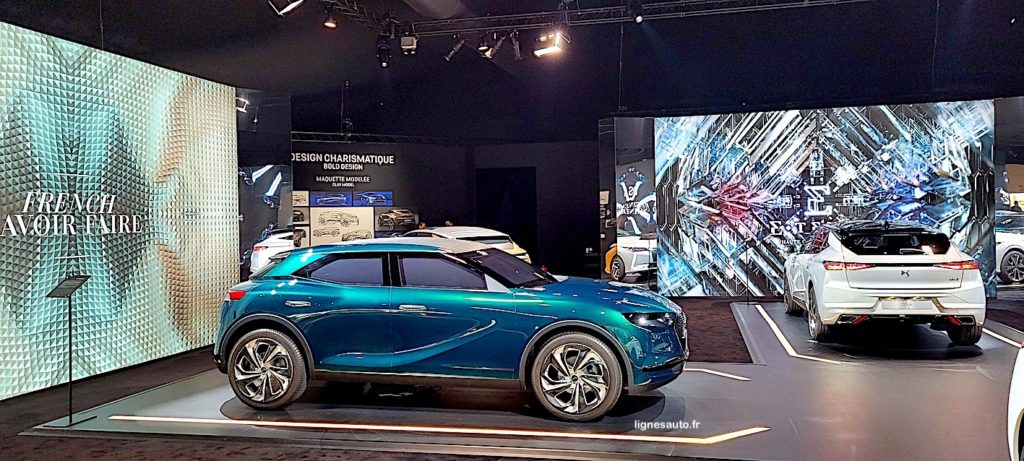
This manifesto was executed in collaboration with engineering as Citroën and Peugeot, for example, proposed their own design vision on this new platform. The convergence has resulted in ideally proportioned designs on the DS4 and Peugeot 308.
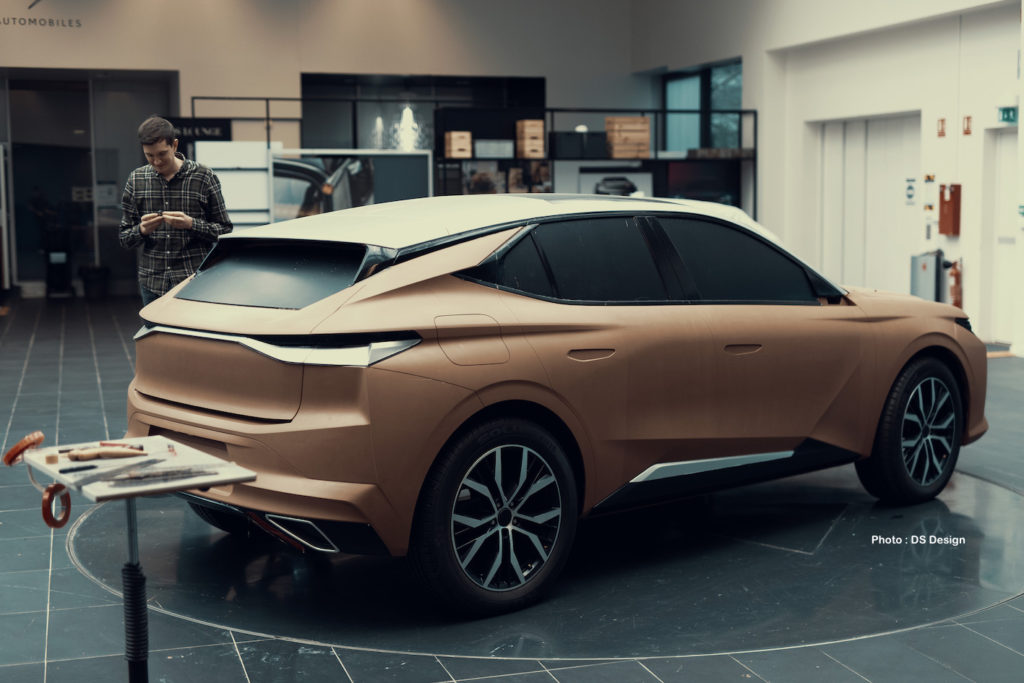
“The Citroën manifesto wanted to optimise the dimensions of the platform as the brand was to give birth to its large C5 X silhouette,” says Thomas. So, does the designer of the DS manifesto see those of its cousins and competitors? “You have to understand that we’re going to share a lot of elements, like the running gear for example, so yes, we end up putting each other’s proposals in a big room in order to validate our different territories. But when we design the model, we don’t know what the others are doing, obviously.“
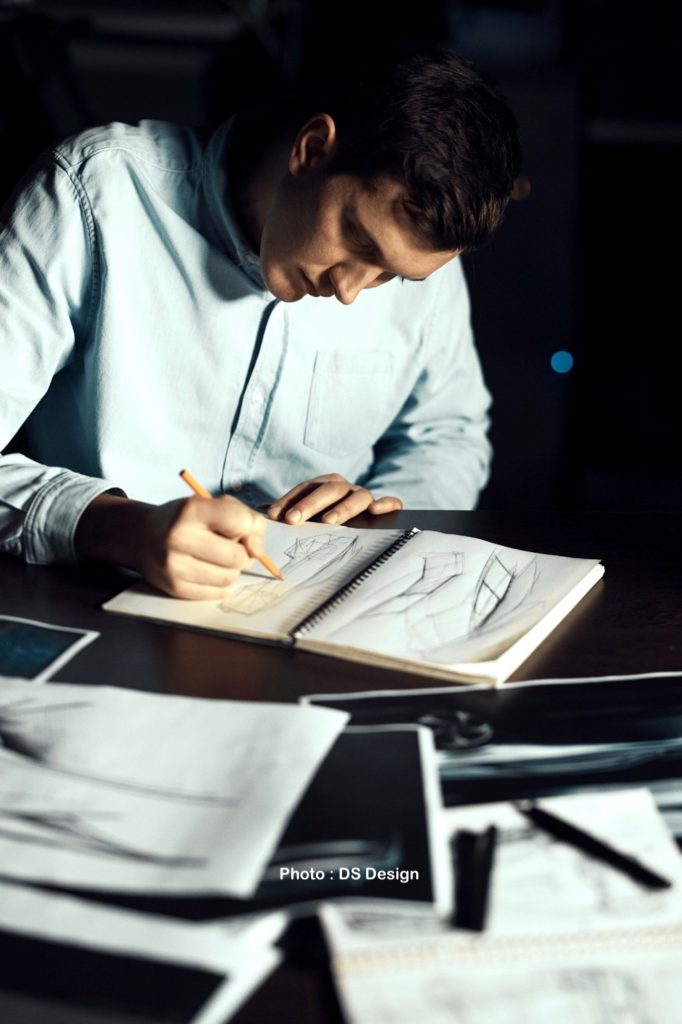
So, before sculpting the 1/1 scale model in clay with the modellers – these artists of the implementation of the design in three dimensions – the designer Thomas Duhamel had to go back to the drawing board. For him, this is a matter of course: “I draw all the time. For the DS4 programme, these drawing phases lasted until 2017, so until the clay model, because even if there are physical or digital supports, I need to ‘sketch’ to find coherence on the car. These sketches are important to me, because if it works on my drawings, it must work well in volume!“
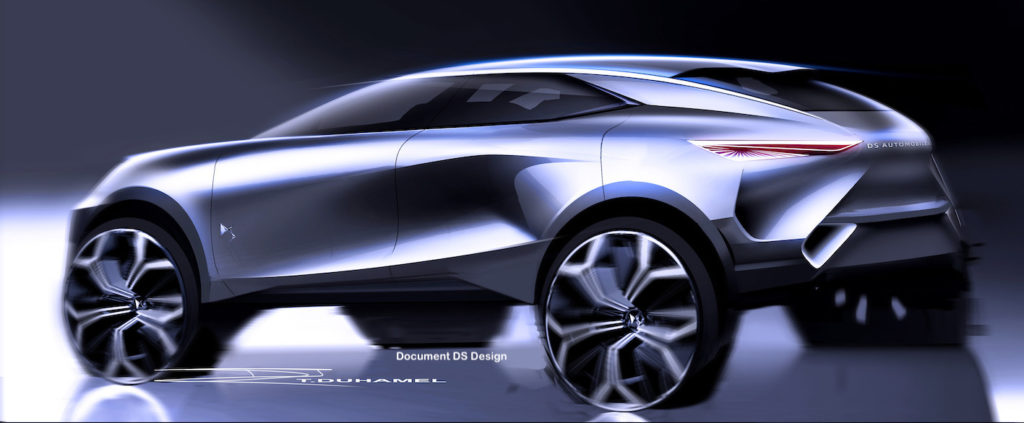
Let’s go back to the 2015 manifesto. It is a full mock-up, with no interior. As we have seen, its objective was to define proportions that could be achieved on the new platform. It is not a question of defining a ‘style’ but a theme. Nor was it a question of taking into account the industrial constraints of a mass-produced product, but of laying the foundations of what the D41 project should be.
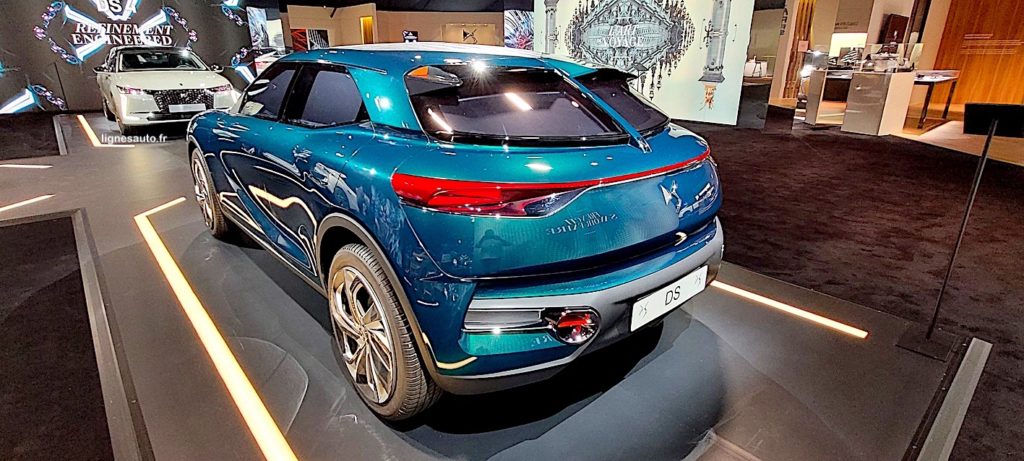
Thomas Duhamel recalls that this manifesto is “a mix between the design of a production vehicle and that of a concept car. We express ourselves with a certain freedom with regard to the constraints of the series, while remaining reasonable in the dimensions. With it, we show our intention, but we are free of constraints, particularly aerodynamic ones. Here, for example, there are a lot of things that don’t work in aerodynamics, like the linkage between the rear wings and the bumper, which is very round and doesn’t take off the air streams…“
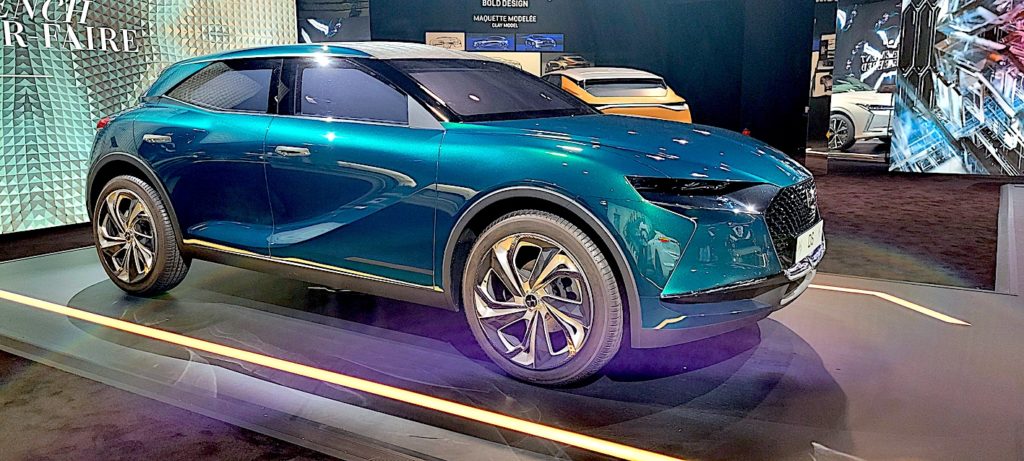
Thus, the manifesto is both very realistic in terms of architecture (tracks, wheelbase, gauge, etc.) but bold in certain stylistic choices, as Thomas Duhamel explains below.
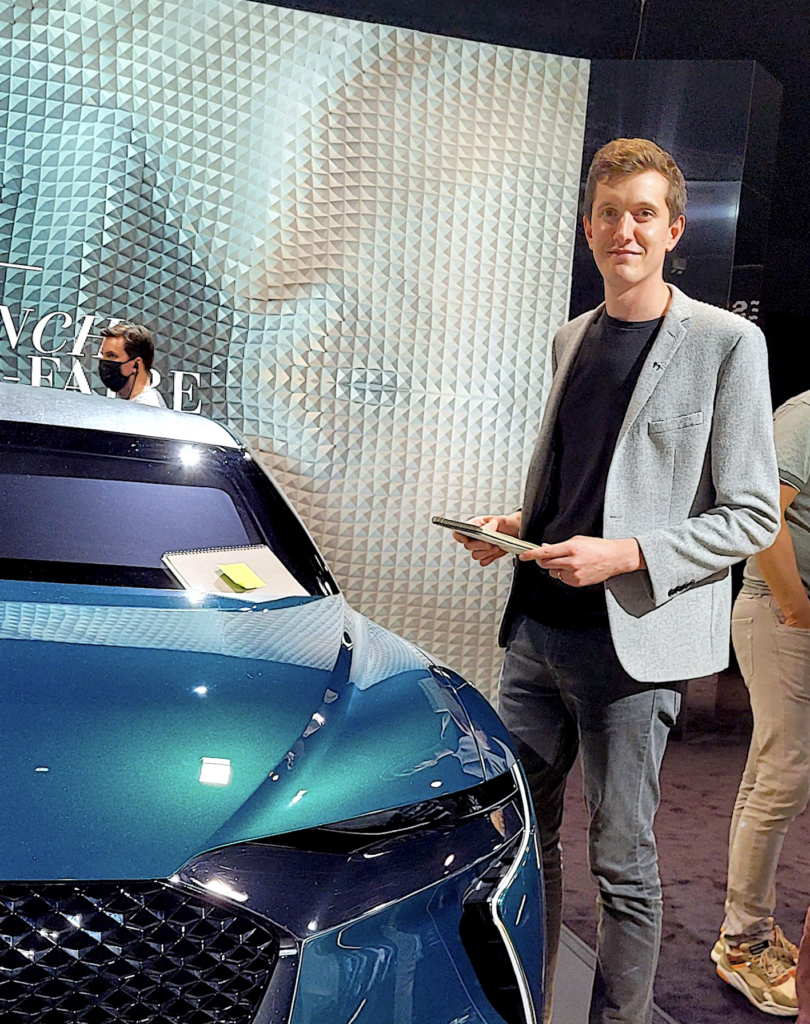
Below, we note in 1, the almost flat and generous engine bonnet and in 2, the long wheelbase desired by the design. In 3, another desire, that of having large wheels. This has an impact on the design of the platform. Engineering will be obliged to design new suspension, with another demand, that of electric hybridisation.
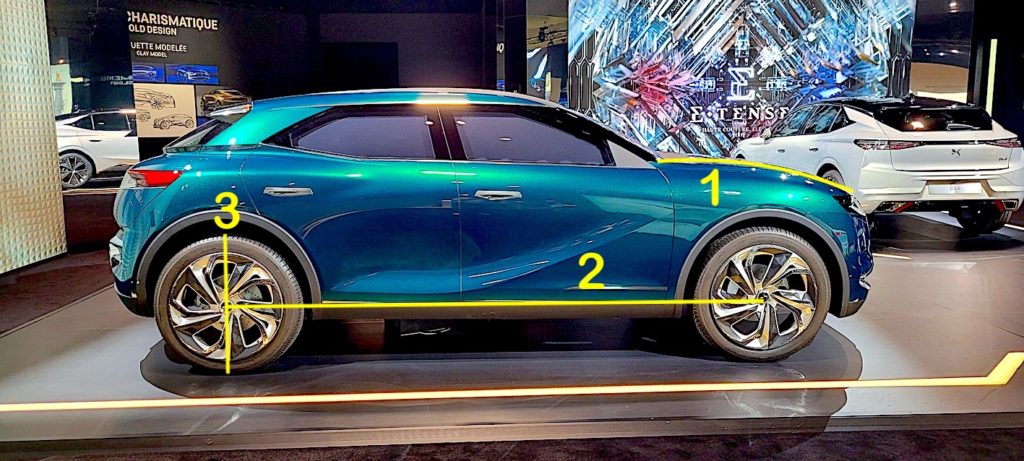
Below are Thomas Duhamel’s words about the rear end in 1, with a rotating connection from the wing to the tailgate, not effective in aero. In 2, the design still uses modelled surfaces, whereas they will be very sharp on the final model. In 3, we can already guess the will of a sheet metal movement on the front door. This movement will be continued in series in a sharper form.
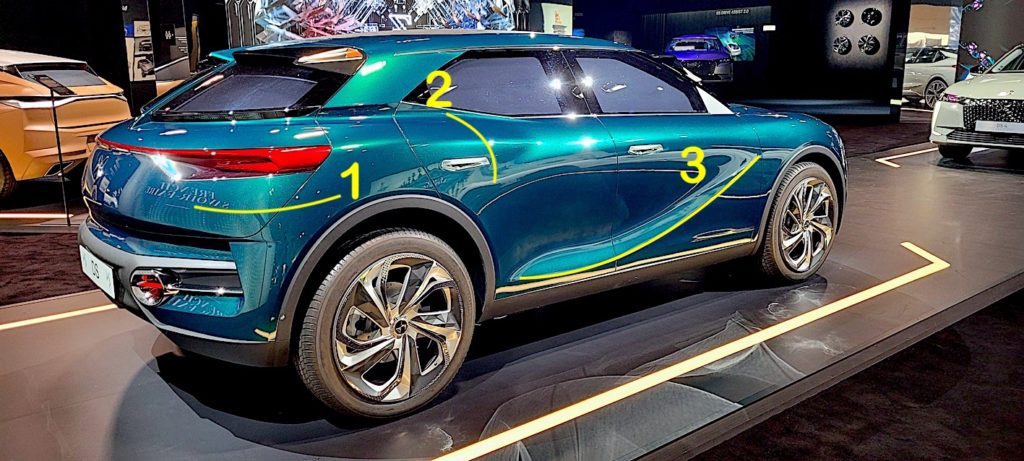
The back below is more daring and Thomas Duhamel explains that “we also use the manifesto as a laboratory. All the departments want to contribute their ideas. I wanted the sword to go through the rear window and I wanted to position the indicators at the top.” Here are the ideas that didn’t make it to the production: in 1, the rear which doesn’t work in an aero version (it will be cut off on the production car, which contributes to the character of the DS4), in 2, the turn signals in the upper part, in 3, the two-part rear window and in 4, the very SUV wheel arch cover.
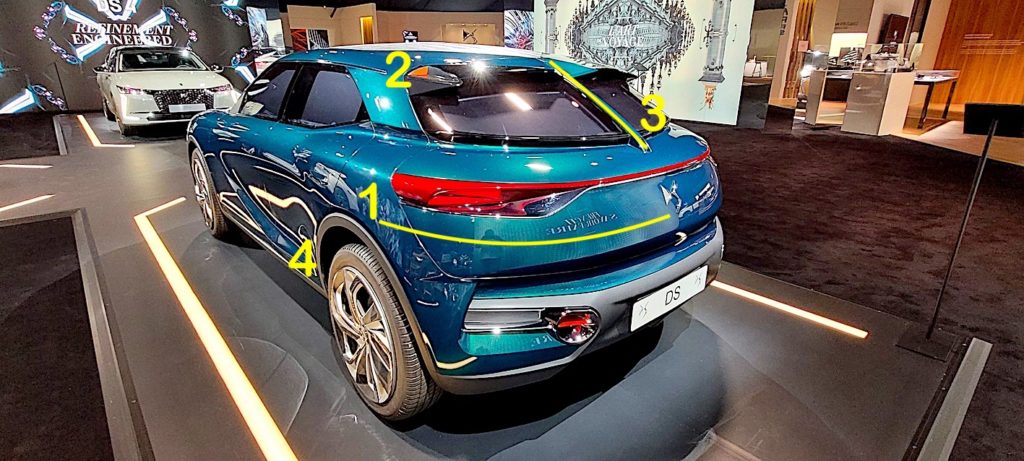
In a nod to the original DS, the spoiler located at the end of the roof is fitted with two aerodynamic deflectors in the shape of a “horn” which take on the function of the indicators. As we know, homologation in this position is not possible, which is absurd when we see some vehicles today with the indicators in the rear bumper, which are therefore invisible…
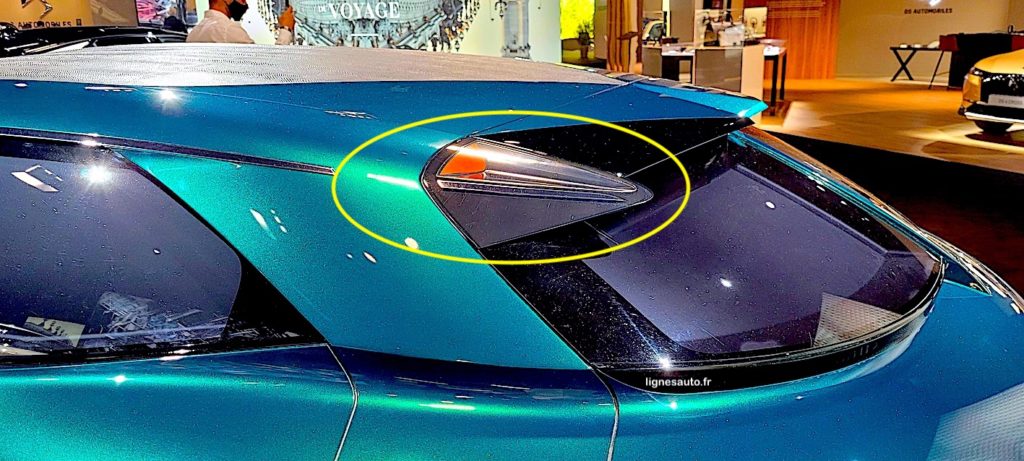
The manifesto already announced a very elaborate light signature as seen below in 1. Thomas Duhamel also reminds us “that the objective with the D41 project was to keep the fine optics present on this model“.
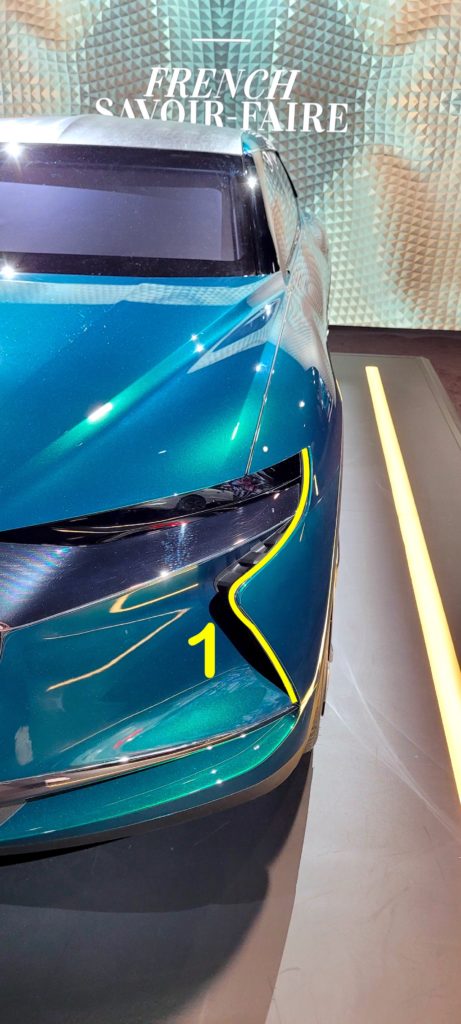
Frédéric Soubirou, the head of exterior design at DS (in the centre of the photo below with the jacket), explains in LIGNES/auto trimestriel No. 3 (available here: lignesautoeditions.fr) “that for the D41 project which gave life to the DS4, after the manifesto, there were four or five polystyrene models, then two clay models which remained in competition.” A competition won by Thomas Duhamel.
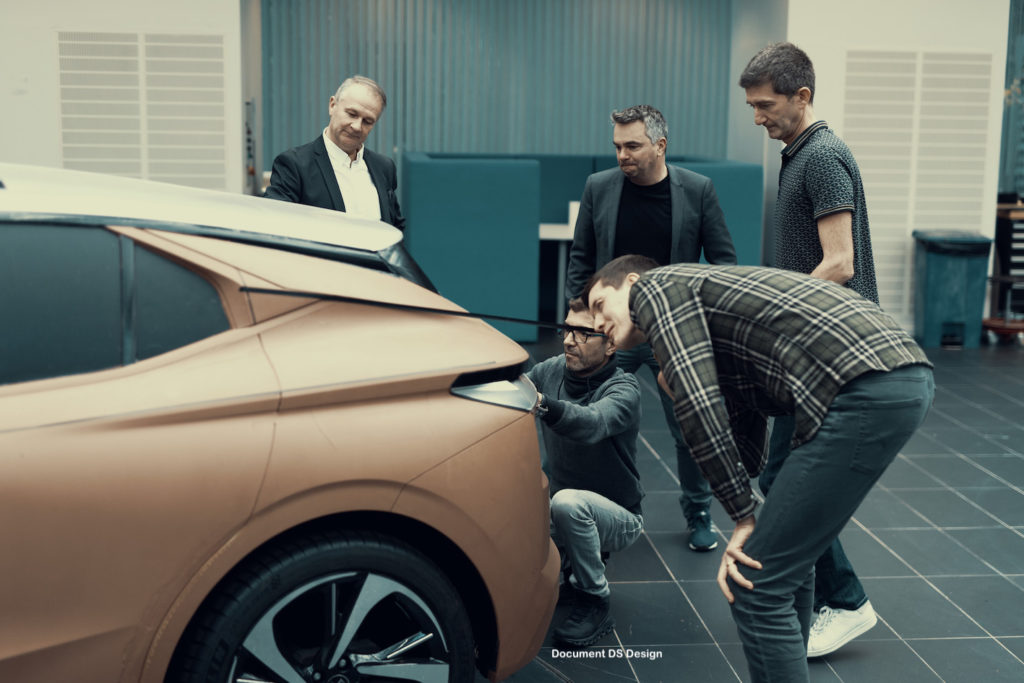
Frédéric explains that Thomas Duhamel “designed the car shortly after he was hired at the ISD school in Valenciennes. I would say that he designed it with his freshness. For him, a modern car should have big wheels. He didn’t want to make a GTI stuck to the ground. His vision was of an elegant but above all, airy style. Based on these ideas, we first produced this manifesto (pictured in this post), a sort of internal concept car. (…) You can already see on this car a very low master torque, a slender car and this airy side, achieved first with the large wheels.”

Thomas Duhamel has not stopped there. After having sketched the manifesto for the end of 2015, validated his project for the DS4 D41 programme, he went on to draw the ASL concept car (above and below). “In 2015, I have been in the studio for barely a year. I was lucky enough to be integrated into the design team dedicated to the new DS brand. I thought the momentum was already there!“

It’s a chance for a designer to come to the right place at the right time! “Yes, it’s great when you’re a young designer to participate in the creation of a brand!” Thomas Duhamel had just graduated from the ISD school in Valenciennes where his internship was followed by the DS design team. “As a student, I thought it was legitimate for DS to be separated from the Citroën brand. We were working on a project for a small DS, the “DS Zero”, and several people from the studio came to help us, including modelers, and we did the project in clay. It was very instructive“.
THE PARENTS OF THE DS4
Of course, as Thomas Duhamel humbly points out, he is not the only one to have worked on the design of the D41 project, which became the DS4. From left to right, here are the names of the main actors in the design part of the programme : Robert NUBOER – Pascal MACE – Frédéric SOUBIROU – Frédéric VALLEE – Fabrice BOSELLI – Bob ROMKES – Laurent NEU – Thierry METROZ – Dominique BOUTHEMY – Andreas STUMP – Thomas BOUVERET – Bernard GERMAIN – Emmanuel RAFFY – Francois LORMEAU – Cyril VEYNANTE – Nicolas DELUY – Alexis GOENS – Arthur HUBERT – Thomas ALTET – Sylvain GAUDICHON – Thomas DUHAMEL – Tzu Han CHOU – Sacha MILINKOVIC – Yovan VUJACIC – Colomba DUCROT
